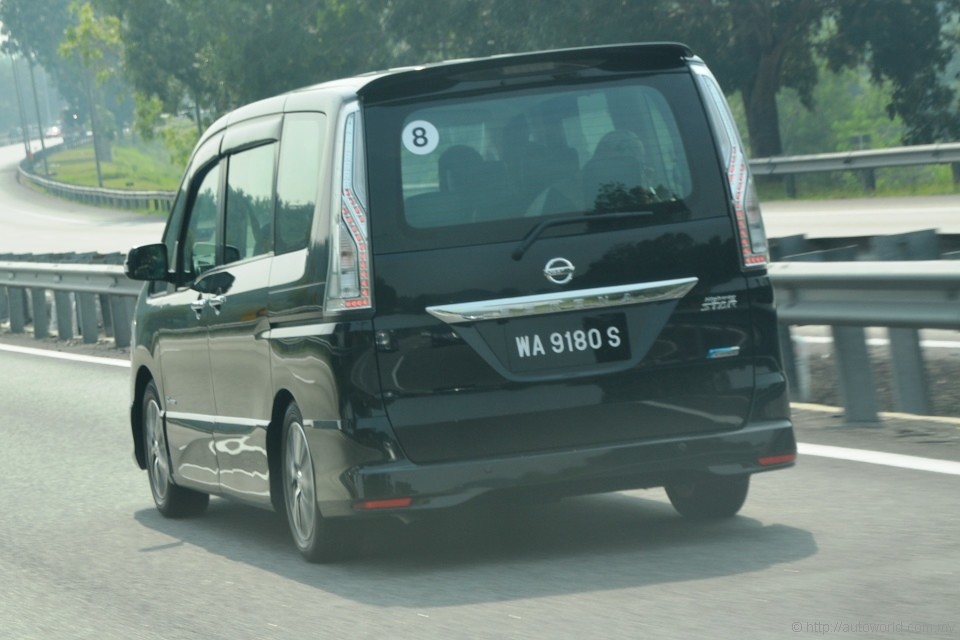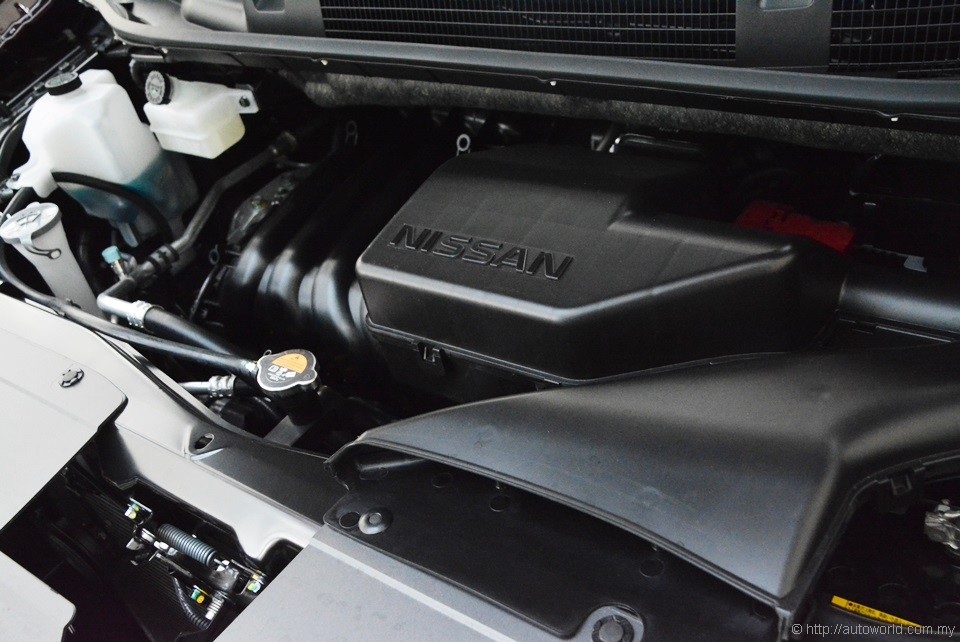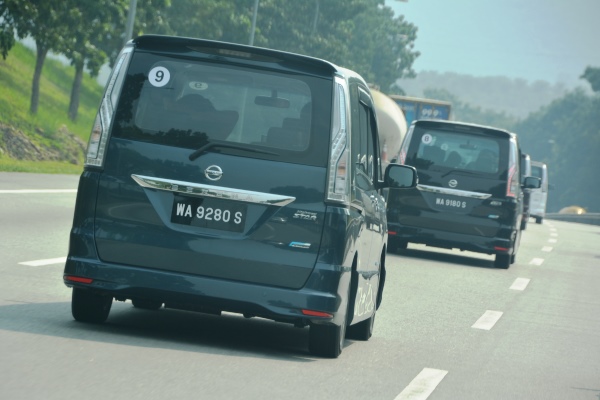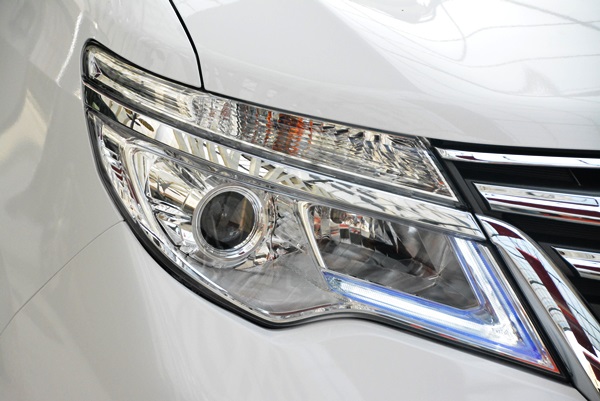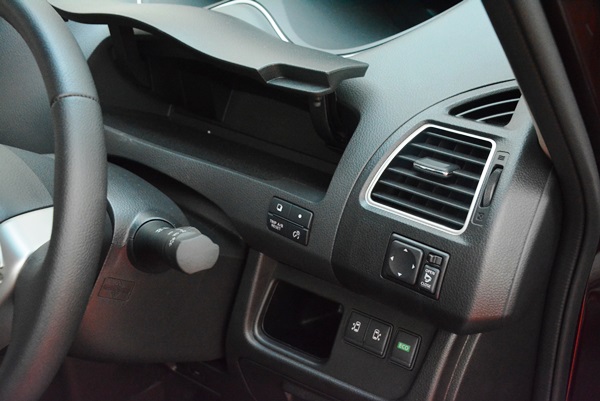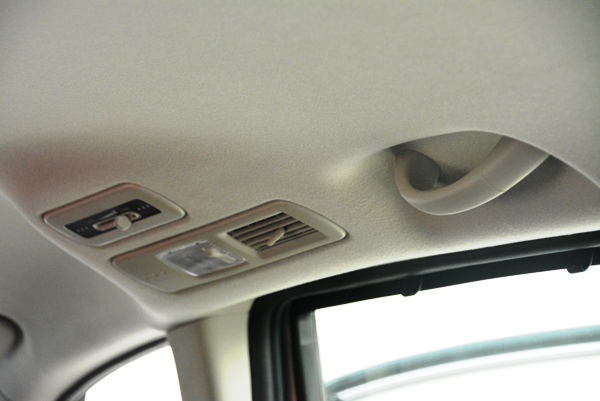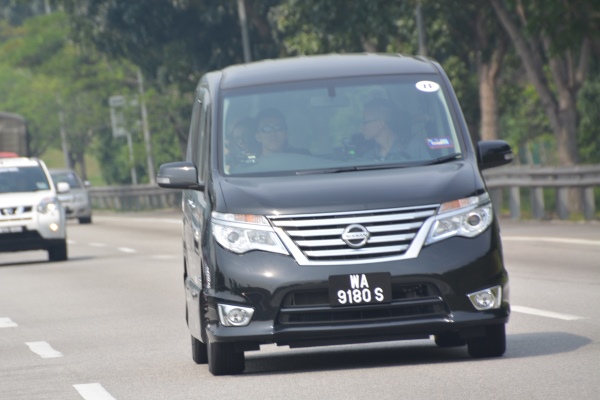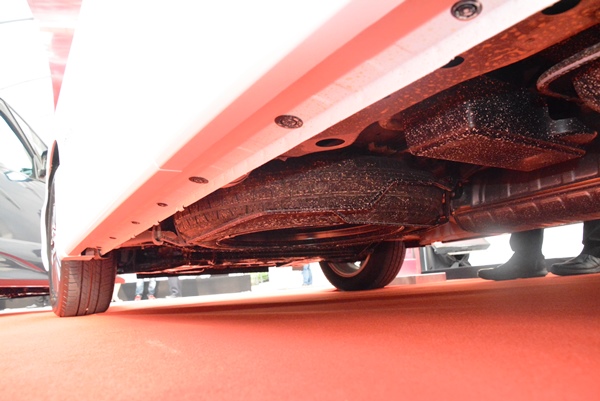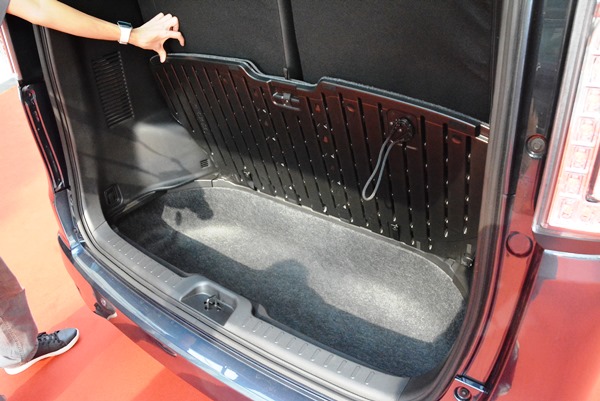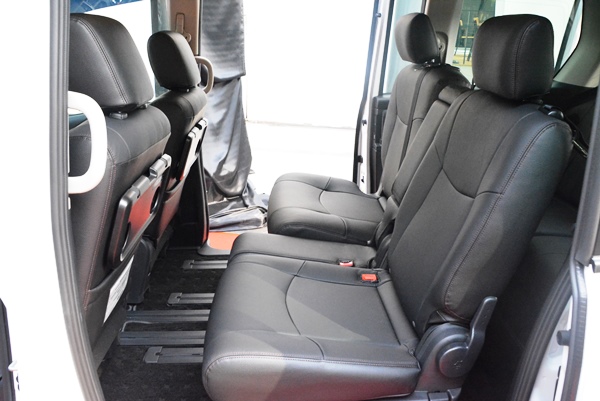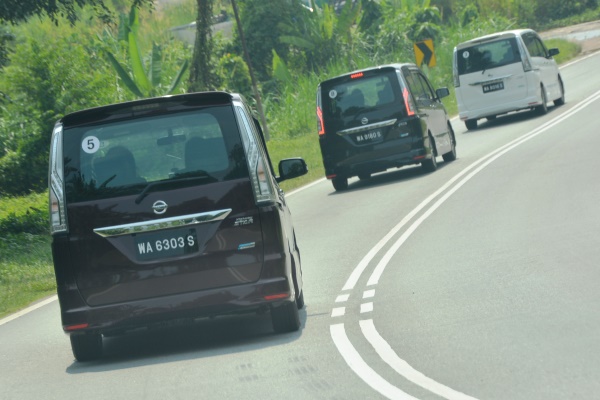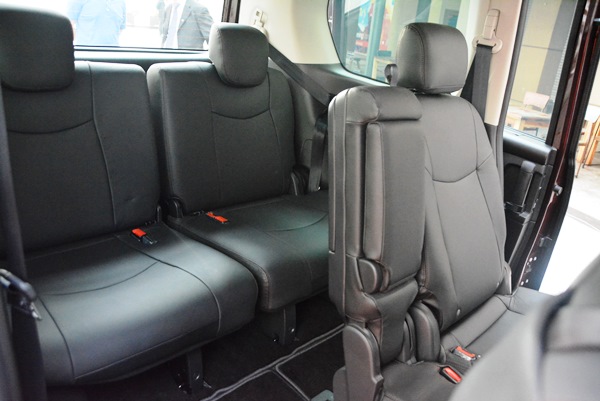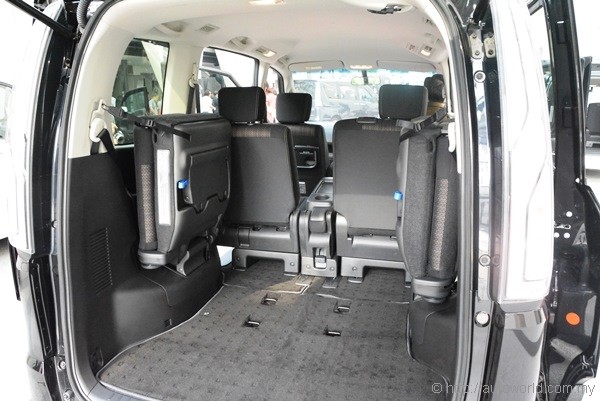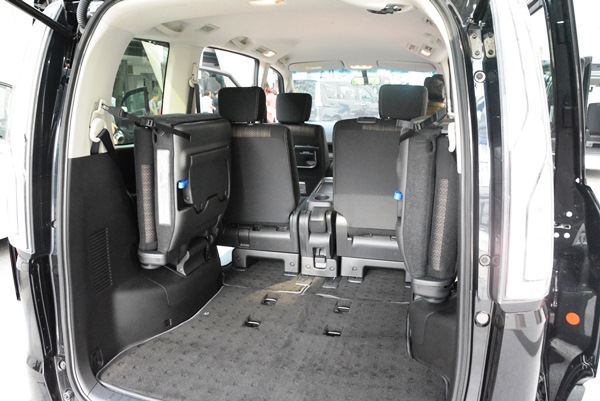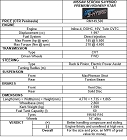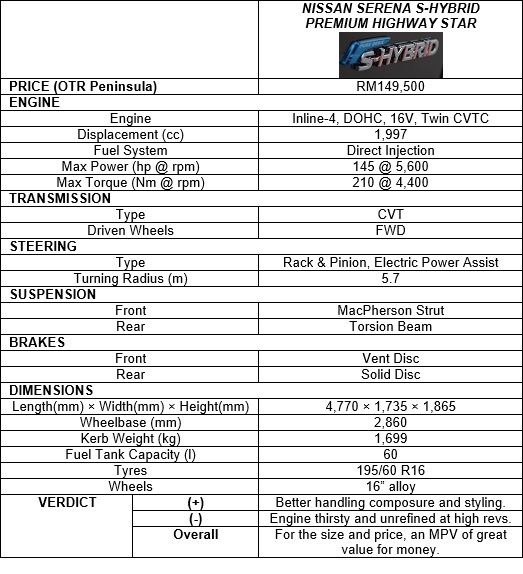Nissan Serena S-Hybrid CKD Test Drive Review
Earlier this week, we reported the launch of Nissan’s newly-facelifted Serena S-Hybrid that is now being assembled locally at the Tan Chong Motor Assemblies (TCMA) plant in Serendah, Rawang. To recap, the pre-facelift Serena S-Hybrid arrived on our shores only last year, and owing to the hybrid tax incentive still in place then, it was fully exempted of import and excise duties.
We had the opportunity to get behind the new S-Hybrid’s wheel immediately after its launch on Tuesday, and after frantically scrambling to have the launch coverage up on the same day, we’ve had a few days to compose our thoughts and lay out our findings of the new vehicle from the media drive, which took us on a day trip to Malacca and back.
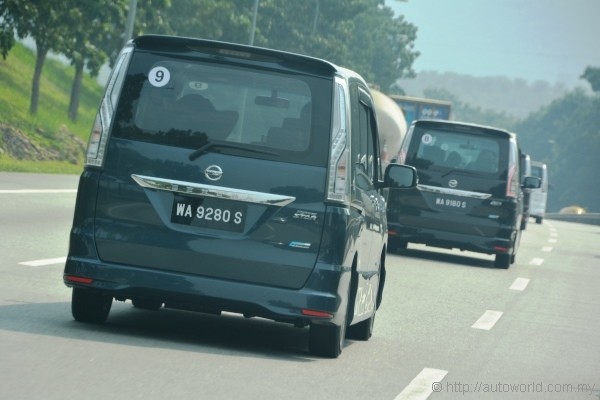 |
| Basic boxy silhouette remains unchanged from pre-facelift model. |
Prices & Variants
Under the previous tax regime, the Serena S-Hybrid was available at an on-the-road price of RM149,500 in its sole Highway Star grade. The new locally-assembled replacement takes advantage of the revised national automotive policy’s customized incentive scheme to similarly enjoy full duty exemption as a locally-assembled energy efficient vehicle.
Currently, the same money of RM149,500 gets the new Serena S-Hybrid in Premium Highway Star guise, which is essentially the regular Highway Star model with all options bundled in. If you’re happy to do without the multimedia touchscreen system, 10.1″ roof-mounted LCD screen, rear roof spoiler, door visors, leather seats, and tinted glass, damage to your finances are then reduced to just RM138,800 with insurance.
Each of the above items can be optioned individually; depending on preference, the window film option can range between RM1,500 and RM4,600. The multimedia system is locally-developed, and its reverse camera integration mean that it is an expense that should not be dismissed immediately. For both variants, standard equipment on offer include digital instruments, keyless entry, stability and traction control, dual frontal airbags, ISOFIX anchors, front and rear LED illumination, and powered sliding doors.
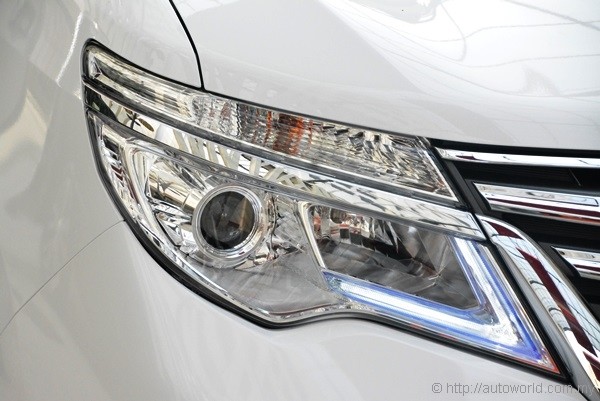 |
| New LED headlamp cluster with distinctive signature position lamps. |
Specifications
Some parties question the validity of the Serena S-Hybrid’s claim as a hybrid vehicle; these doubts are fueled by the fact that beyond a brief period of a few seconds during start-up, motion of the vehicle is sustained entirely by the efforts of the 2.0-litre MR20DD naturally-aspirated petrol direct injection engine, which supplies a rated 145hp and 210Nm to the front wheels via Nissan’s X-Tronic CVT from Jatco.
The piece of equipment which Nissan uses to justify the Serena S-Hybrid’s credentials is what it calls an ‘Eco Motor’ that supplies 50Nm additional torque during start-up; its electricity is supplied by a separate heavy duty lead-acid battery that does not last the lifetime of a car, but infinitely cheaper to replace than exotic element batteries found in more sophisticated hybrid vehicles. In regular motion, the ‘Eco Motor’ functions as an alternator to generate electricity.
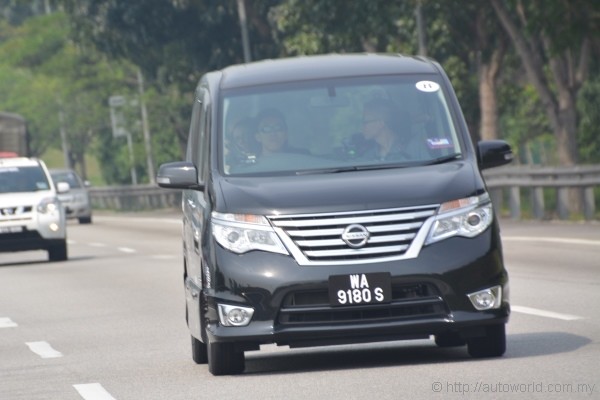 |
| New fascia gives the Serena closer family resemblance to the Elgrand. |
Exterior
Whilst largely unchanged under its skin, the Serena’s appearance is subject to considerable alteration from the pre-facelift model. A bolder and more expressive grille creates closer resemblance to the larger Elgrand; with a switch from regular halogen reflector headlights to more sophisticated LED projectors further enhancing its appearance.
Other than a revised arrangement of bulbs in the rear combination lamps, rest of the Serena aft of its A-pillars are effectively unchanged. Overall, it retains a relatively lanky profile that is taller than it is wide. Despite the presence of an all-round aerodynamic body kit, dynamic-looking it is not, even if the revised fascia gives it significantly more commendable road presence.
The Serena was not originally designed to incorporate a spare tyre, but that decision has since been revisited by Nissan as many a customer has expressed discomfort in having to rely on a tyre repair kit. Nissan engineers embraced an unorthodox solution by placing an underslung space-saving spare directly under the front passenger. We have question marks on its ease of access, but we understand that with the rear overhang area already sculpted to accommodate a usefully vast hidden storage compartment, this is an after-thought solution.
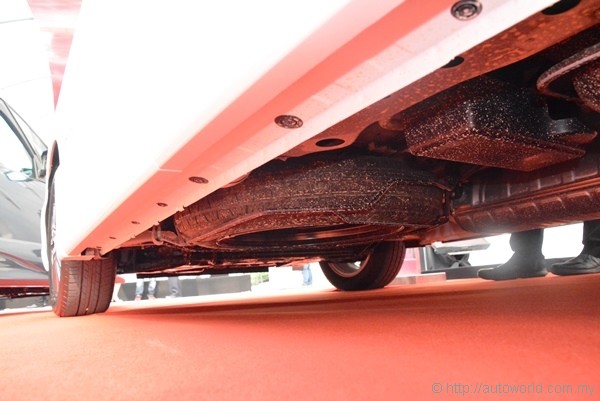 |
| Spare tyre is mounted below the front passenger. |
Interior
Little has been changed inside the Serena’s cabin and in all honesty, little needed changing anyways. As befits a dedicated family MPV, the Serena offers comfortable and capacious accommodations for as many as eight people at one go with a 14 possible arrangements of its three rows of seats although for safety reasons, certain configurations should only be deployed whilst the vehicle is stationary.
Up front, the dashboard has also been retained with no noticeable alteration. That’s fine by us – we found little fault with the original control layout, except for the absence of steering-mounted audio switches; a very inconvenient omission this day and age especially on units that are optioned with the touchscreen system. Other control elements, however, are sensibly laid out and present no pain to operate.
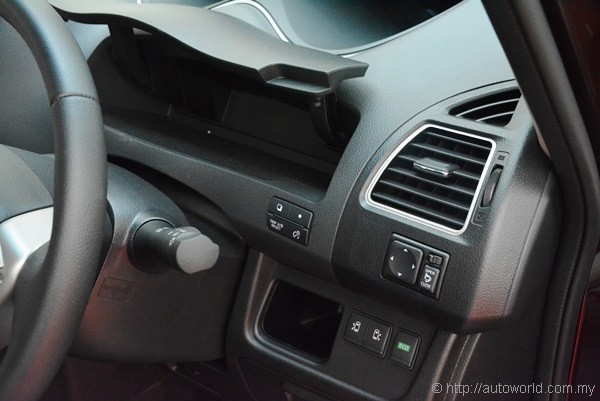 |
| Extra storage compartment behind steering wheel is useful. |
Driving Experience
If our experience with the pre-facelift model was anything to go buy, there isn’t much to expect of the Serena S-Hybrid as far as driving enjoyment is concerned. Its underlying bias toward comfort is definite, although we must note a couple of improvements from the outgoing CBU models.
High speed stability on straight line feels more convincing than before, with speeds up to 160kph sustained with reassuring composure. In the pre-facelift CBU version, we recall nervousness creeping into the chassis at 120-130kph onwards. We also noticed an added level of suppleness to the suspension when going over sharp bumps, which is also welcomed improvement.
Owing to its tall proportions, cornering is an exercise best performed with tremendous care and you’re well-advised to shave as much speed off as possible before entering a bend; not that engine minds such an approach anyway – it feels rough and utterly unrefined under full throttle. The message from the mechanical bits are clear – this is a car that is entirely unsuited for the rigours of hard driving.
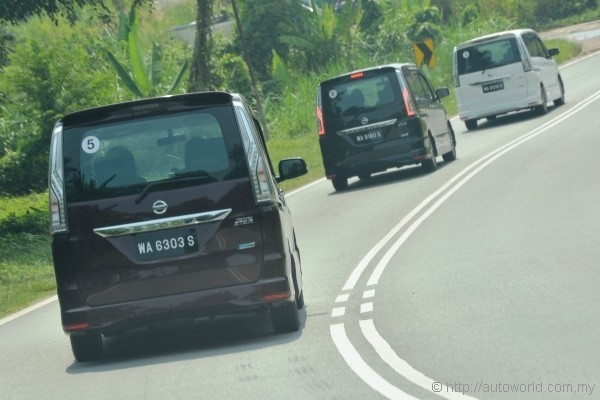 |
| Handling is notably improved, but Serena is still unsuited for exuberant driving. |
Verdict
Despite its refreshed looks, the new facelifted Serena has changed little in terms of what it offers as a product. Improved composure of the chassis is a pleasing and welcomed surprise; it’s no sports car, but in less than ideal surfaces, it is reassuringly less nervous to drive. A highly effective sound insulation package further boosts its credentials of refinement.
There are, as mentioned earlier, question marks on the Serena’s eligibility to called a hybrid vehicle. Indeed, our experience with the current and pre-facelift models suggest that if the petrol engine is called upon to summon any serious amount of acceleration, its fuel economy drifts a fair distance away from its claimed 15.2 km/l. Justification of the Serena S-Hybrid’s case therefore comes in not reading too much into its ‘S-Hybrid’ moniker but merely accepting it as an affordably-priced and well-appointed MPV.
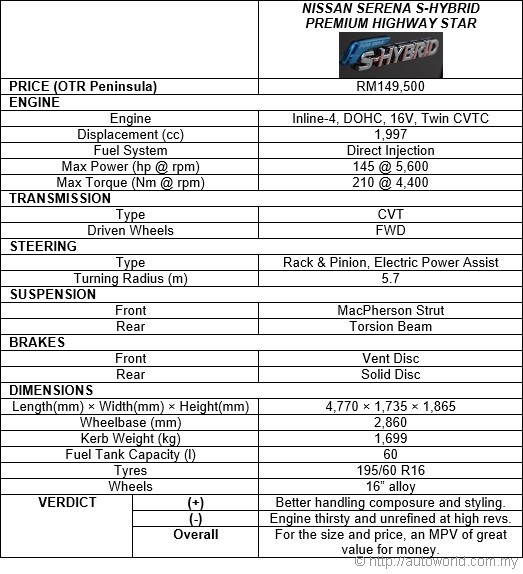 |





